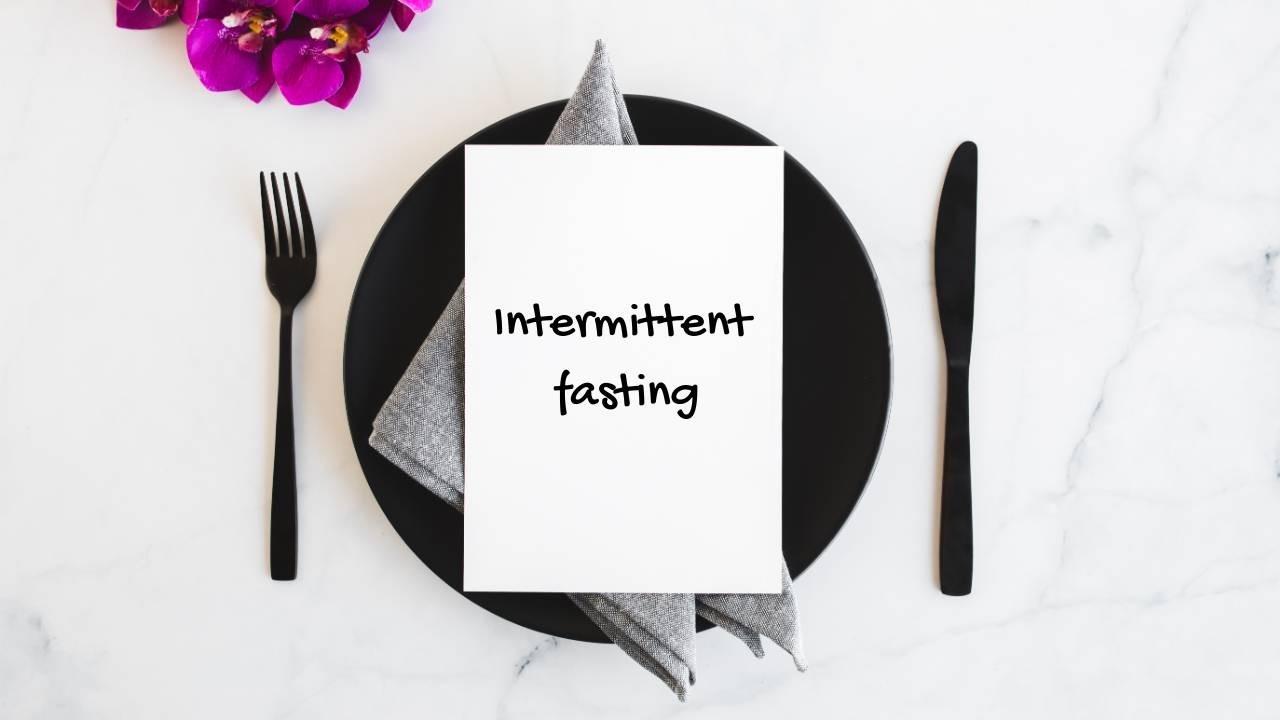Intermittent Fasting: Breaking Down the Evidence

Intermittent Fasting; the latest in diet trends. Claiming health benefits from weight loss to prevention of chronic disease. Is it really the answer to the world’s health problems? We take a look at the evidence…
What is Intermittent Fasting?
Intermittent fasting encompasses several different dietary behaviours, all of which focus on controlling the period in which food is consumed. These behaviours dictate a fasting and feeding schedule of various lengths. However, there isn’t a restriction placed on the TYPES of foods consumed during feeding times.
Different Types of Intermittent Fasting:
The three most popular methods that are circulating the health and fitness industry are:
- Time-Restricted Feeding
Daily fasting for a minimum of 12 hours (the most common fast is 16 hours, with 8 hours during the day to eat, for example only eating between 11am and 7pm). - Alternate Day Fasting
Involves cycling between one day of “fasting” and one day of consuming your regular diet. On the “fasting” day, you consume less than ~25% of your daily energy requirements. For an average adult, this equates to ~2175kJ – or roughly equivalent to your lunchtime chicken sandwich. - The 5 and 2 Method
This involves energy restriction to less than 25% of the requirements for two non-consecutive days per week. While 5 days you eat as per usual.
The Health Benefits
Intermittent fasting has been shown to cause significant weight loss in short-term studies, varying from 4-8% loss of body weight within 6-12 weeks (3-5, 7). However, when this was compared to constant control of energy intake there appears to be no difference in weight loss between the groups (3-5). Findings did point to less loss of fat-free mass (our muscle) during intermittent fasting, demonstrating that it may be a more efficient method to prevent loss of lean muscle mass during weight loss periods (4-5).
Intermittent fasting has been linked to a reduced risk of cardiovascular disease, however with the current research available it is difficult to observe if benefits are unique to fasting, or if they simply occur as a result of weight loss. These benefits include improvements in cholesterol (lowered LDL and total cholesterol), triglycerides, blood pressure, and inflammatory and oxidative stress markers (3-4). Fat loss also produces changes in circulating levels or certain adipokine’s (proteins released by fat cells) which has a protective effect on the progression of cardiovascular disease and cancer (3-4). Fasting has also shown decreases in fasting insulin levels and insulin resistance, good news for the prevention and management of Type 2 Diabetes (3-4). Despite these preliminary benefits, current research remains largely inconclusive, highlighting a need for further long-term human studies.
Is it an Option for Athletes?
When considering changing up your dietary routine, one of the most important questions to ask is, “is it sustainable in the long term for your lifestyle?”. Whether a recreational athlete or a serious competitor, having enough fuel in the tank is essential to get through long, hard training sessions. Incorporating extended periods of fasting and depleting fuel stores, while continuing to attempt a high training load is counterproductive.
We know that lower intensity exercise draws predominantly on fat as a fuel source. While higher intensities have an increased reliance on carbohydrate as a fuel. With insufficient fuel at high intensities, you slow down to allow the body to utilise more fat as a fuel. In both professional and recreational athletes, VO2 max decreased by up to 12% during an intermittent fasting routine (2). However, regardless of type or intensity of exercise, all athletes reported feeling higher levels of fatigue (1-2).
So if your daily training routine is more aerobic, slow and steady style, then fasting may not impact too much on performance; although you might not feel quite as light on your feet! Planning rest days or shorter, easier, recovery type sessions on fasting days could be the way around this. If you’re more interested in short, sharp, high-intensity sessions, you would struggle to get the best performance out of your session in a prolonged fasted state.
Recovery is also significantly impacted if you’re not able to refuel after a session. The ingestion of protein and carbohydrate post-exercise increases muscle synthesis and replenishes glycogen stores. If you’re unable to adequately refuel post-exercise or even during the following 24 hours, this can result in muscle breakdown and inadequate energy stores to complete training on subsequent days (8). In summary, it would be difficult to incorporate intermittent fasting with a heavy training load, however, there are certain adjustments you could make to try and minimise negative effects:
- Choose time-restricted feeding over other fasting patterns, this allows for adequate fuel intake EVERY day and will have the smallest negative impact on recovery.
- If choosing a fasting technique where intake on certain days is less than 25% of requirements, ensure protein intake is adequate to prevent muscle breakdown after training. Intake of 20-30g of protein following a session and regularly distributed throughout the day is a good place to start! (8)
- Plan training sessions OUTSIDE of fasting times if possible to minimise the effect on performance.
- Stay HYDRATED to prevent further fatigue on your body. Sometimes when we’re not eating we also forget to drink!
Playing devil’s advocate
In our opinion, any form of dietary restriction should come with a big fat warning sign! These behaviours can result in increased hunger levels and overeating outside of fasting times. We commonly see people on the 2 and 5 diet binge eat on their 5 days of “normal” eating, completely negating any effect of the 2 days of fasting! Our body is great at playing catch up. Other negative effects to highlight include irritability and an inability to focus, so proceed with caution as everyone is different and fasting may not suit you (or your family!). Extra effort should also be placed on consuming a balanced diet in the hours of feeding to ensure you are still getting everything you need.
The final word
Although intermittent fasting is praised at times, there is still inadequate research to promote it globally as a superior method for weight loss or prevention of chronic disease. Yes, there are several proposed benefits, however, these could simply be seen as a result of weight loss itself. Fasting also requires significant effort to ensure dietary intake is adequately met and for athletes, alterations to your training schedule so performance is minimally affected. The best diet is the one you can stick to! If fasting is something you want to consider – see an Accredited Dietitian who can ensure you’re getting everything you need across the week, no matter what fasting program you’re on.
References
(1) Chaouachi, J., Coutts, P., Chamari, P., Wong, P., Chaouachi, P., Chtara, P., Roky, P., et al. (2009). Effect of Ramadan Intermittent Fasting on Aerobic and Anaerobic Performance and Perception of Fatigue in Male Elite Judo Athletes. Journal of Strength and Conditioning Research, 23(9), 2702–2709. doi:10.1519/JSC.0b013e3181bc17fc
(2) Chaouachi, A., Leiper, J., Chtourou, H., Aziz, A., & Chamari, K. (2012). The effects of Ramadan intermittent fasting on athletic performance: Recommendations for the maintenance of physical fitness. Journal of Sports Sciences, 30, S53. Retrieved from http://search.proquest.com/docview/1026565523/
(3) Patterson, R., & Sears, D. (n.d.). Metabolic Effects of Intermittent Fasting. Annual Review of Nutrition, 37, 371–393. doi:10.1146/annurev-nutr-071816-064634
(4) Anton, S., Moehl, K., Donahoo, W., Marosi, K., Lee, S., Mainous, A., Leeuwenburgh, C., et al. (2018, February). Flipping the Metabolic Switch: Understanding and Applying the Health Benefits of Fasting. Obesity. doi:10.1002/oby.22065
(5) Harvie, M., & Howell, A. (2017). Potential Benefits and Harms of Intermittent Energy Restriction and Intermittent Fasting Amongst Obese, Overweight and Normal Weight Subjects-A Narrative Review of Human and Animal Evidence. Behavioral Sciences, 7(1), 4. doi:10.3390/bs7010004
(6) Maughan, R., Fallah, J., & Coyle, E. (2010). The effects of fasting on metabolism and performance. British Journal of Sports Medicine, 44(7), 490. doi:10.1136/bjsm.2010.072181
(7) Varady, K. (2011). Intermittent versus daily calorie restriction: which diet regimen is more effective for weight loss? Obesity reviews : an official journal of the International Association for the Study of Obesity, 12(7), e593. doi:10.1111/j.1467-789X.2011.00873.x
(8) Burke, L. (2010). Fasting and recovery from exercise. British Journal of Sports Medicine. 44,502-508. doi: 10.1136/bjsm.2007.071472
If you need help with your nutrition, here's how you can work with me 1 on 1.
If you're looking for a more cost-effective option, here's how you can get started NOW with one of my online courses
Tags: 2 and 5 diet, 5 and 2 diet, Brisbane Dietitian, Brisbane Sports Dietitian, Dietitian Approved, Dietitian Brisbane, dietitian tips, fasting, fasting for athletes, intermittent fasting, intermittent fasting for athletes, sports dietitian, Sports Dietitian Australia, Sports Dietitian Brisbane, sports nutrition




